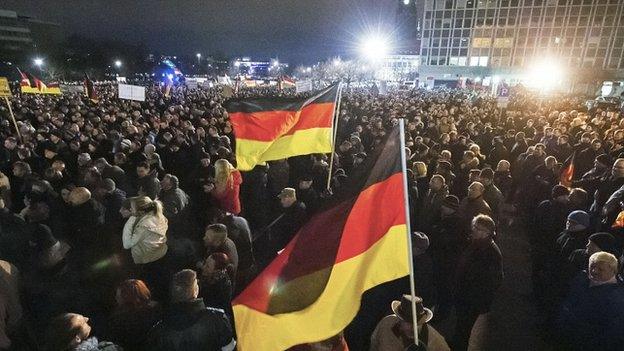Dresden's anti-war sculpture denounced by protesters
- Published
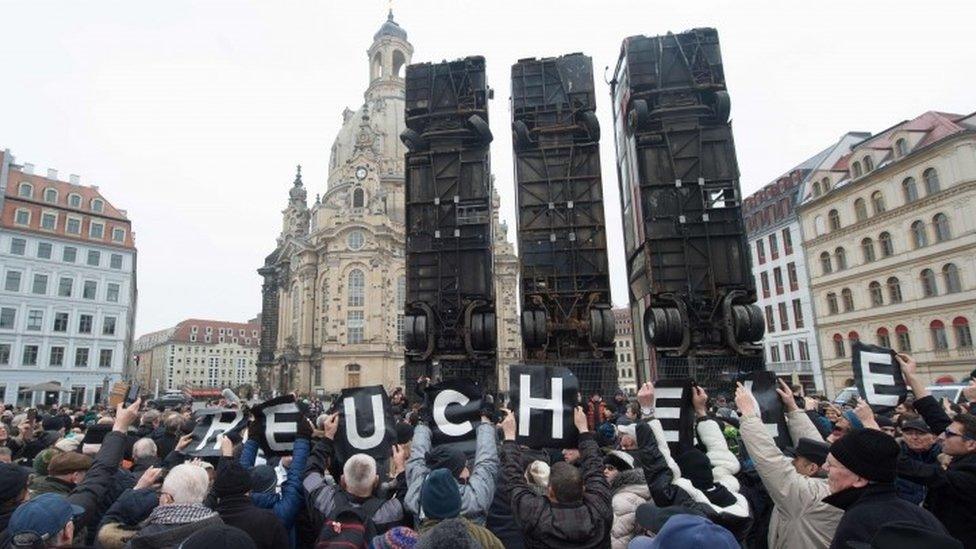
Protesters argue that the buses sculpture is not needed or wanted in Dresden
Right wing protesters in the German city of Dresden have taken to the streets against an anti-war sculpture consisting of three passenger buses placed vertically in the air.
The upturned vehicles are meant to resemble a sniper barricade in the Syrian city of Aleppo.
They are being put into place ahead of the annual memorial of the allied bombing of Dresden in World War Two.
Dresden mayor Dirk Hilbert was booed as he formally inaugurated the sculpture.
Police are investigating anonymous death threats against supporters of the scheme, including Mr Hilbert who has been allocated a police guard.
The inspiration for the imposing monument came from barricades used by rebels in besieged eastern Aleppo, made out of upturned buses which shielded people against the snipers of President Bashar al-Assad.
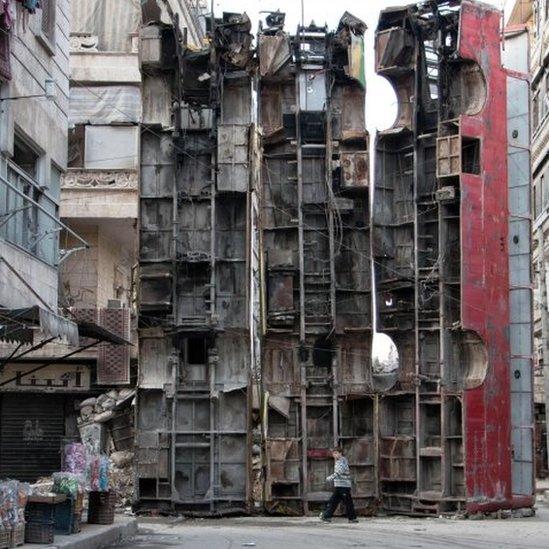
A makeshift barricade of bus wreckage was set up in rebel-held eastern Aleppo to obstruct the view of government snipers
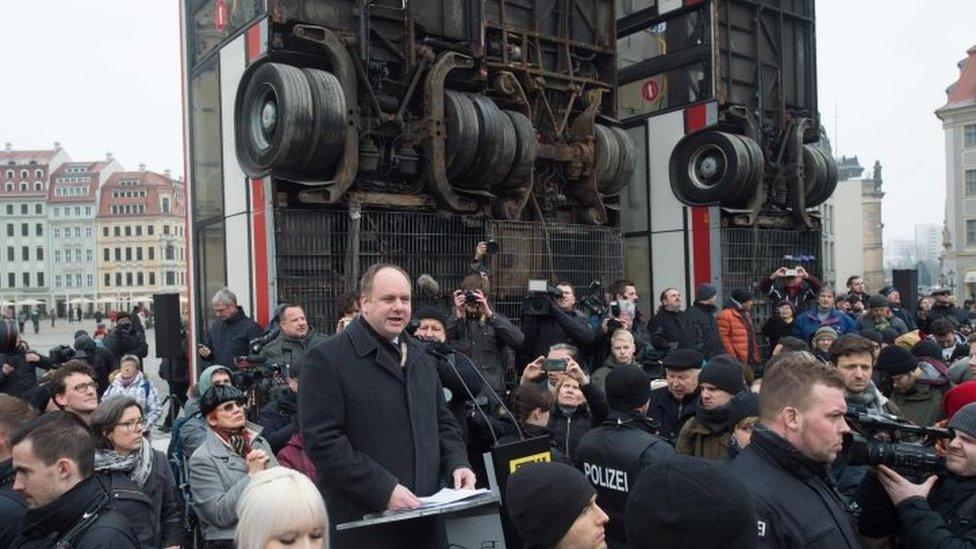
Dresden Mayor Dirk Hilbert (centre) was heckled during the inauguration ceremony
Thirty-two-year-old Syrian-German artist Manaf Halbouni told the DPA news agency that the monument is intended to represent "peace, freedom and humanity".
"There is no other political message," he said. "It's a peace memorial, a modern Statue of Liberty."
He said the point of the sculpture was to inspire hope - in Dresden and Aleppo - while making the point that "life goes on, despite all the destruction".
But Dresden's far-right anti-Islamic Pegida movement has described the project as idiotic, an abuse of artistic freedom and an attack on their identity.
Protesters from the group jeered and booed Mayor Hilbert, branding him a "traitor" while yelling "shame, shame" during the ceremony. They called for the sculpture to be melted down into scrap metal.
An estimated 25,000 people died in the British and American attack of Dresden which started on 13 February 1945, creating a firestorm that left 33 sq km (12 sq miles) of the city in ruins.
- Published17 January 2017
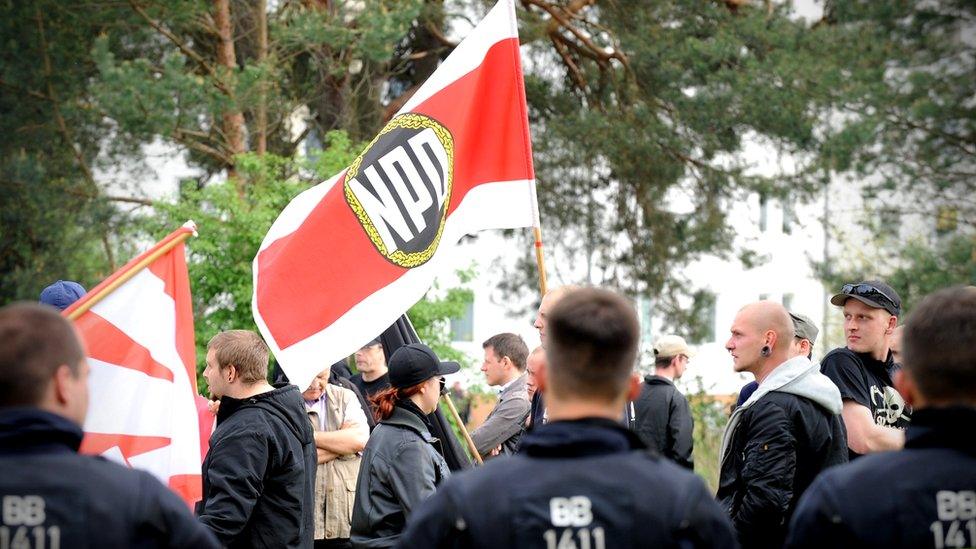
- Published3 May 2016

- Published10 January 2015
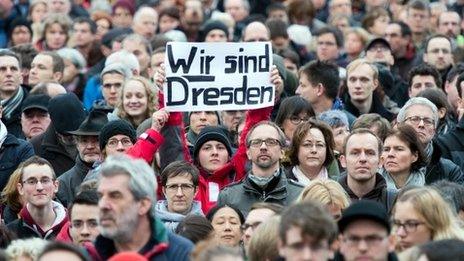
- Published19 December 2015
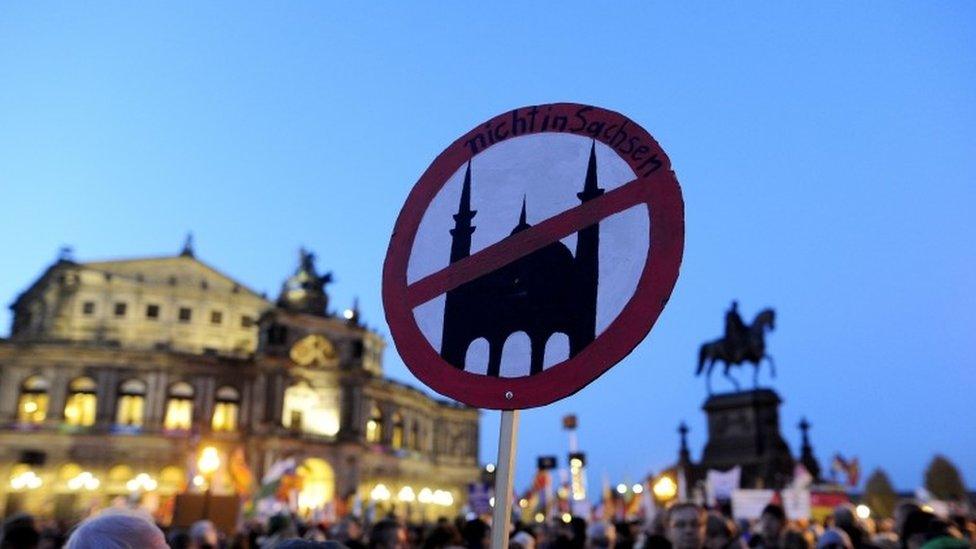
- Published16 January 2015

- Published13 January 2015

- Published16 December 2014
